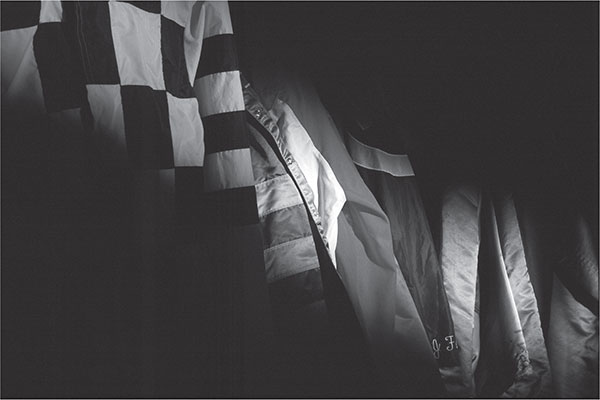
JOCKEYS’ SILKS
To a racing fan trackside, they are part of the dramatic color of race; to an owner, they’re a trademark and symbol of the stable; to a jockey, they’re a uniform; to the track announcer, they’re a helpful hint of which horse is which as he calls the race; but most important, they are an aid to the track judges in distinguishing one horse from another.56 In a photo finish, for example, only the nose of the horse away from the camera and the jockey’s back and cap might be visible behind a horse nearer to the camera.
Ancient Persian, Chinese and Indian paintings and pottery demonstrate both horse racing and the use of colors for identity. Organized racing was conducted by the ancient Greeks.57 By 624 BC, Greek riders wore colored cloaks into the arena called “chlamys.”58 However, when it was time for the race, they dropped the cloaks and rode bare as well as barebacked. Some horses may even have been dyed colors.59
The Romans introduced colored tunics and headbands. Emperor Nero’s color was green, for example, and vendors in stalls outside the Coliseum sold colored headbands for attendees to wear in support of their horse.60 The Huns, Mongols and Muslims all put different squads of cavalry in different colored gear.61
In the Middle Ages, heraldry and armored knights led to a need for identification on the battlefield; coats of arms and crests began to appear on shields and on tunics worn over the armor. Heraldry also provided the basic design elements used for silks.62 The designs moved first to the doublets of housemen and footmen of the noble. When he started racing, it was natural to adopt the doublet for the jockey.
The first mention of individual colors was under Henry VIII in 1515. By 1762, the variety and overlap of designs led horsemen to regulate the use. At a meeting at Newmarket, England, a racing town, the Jockey Club adopted a rule that all horsemen should adopt and register their “colours.” Nineteen gentlemen at the meeting registered theirs. His Royal Highness the Duke of Cumberland chose purple; His Grace the Duke of Grafton registered sky blue. “Straw” was the color chosen by the Duke of Devonshire; as of 1993, his family still sported that color. Originally, all caps were black, but by 1771, colored caps, bands and stripes appear and the material moved from velvet to satin.63
The practice of jockeys wearing silks, or satins, carried over to the English colonies, but not the requirement of registration. Although jockey clubs were formed locally to govern racing in various venues in the colonies (and later, states), the focus was not on silks. The Lexington (Kentucky) Jockey Club adopted a rule in 1826 that all riders were to wear silk jackets and caps, but it did not attempt a design register.64 It was not until the New York Board of Control, which regulated races in that state, started a register in 1890.65 While today the (American) Jockey Club has a master registry, state racing commissions also can set up registers, which can result in duplication. By 1893, the drivers at trotting tracks began to adopt designs that finally became standardized in the 1950s.66

Silks. Bill Straus.
Today, there are more than fifteen thousand designs registered in Great Britain, even though owners are limited to eighteen colors, twenty-five shapes and twelve sleeves. In the United States, there is a broader choice of colors and designs, including original ones, but each must be approved by the club.67
Unusual or unique designs include a former NBA referee’s black and white stripes that resemble his on-court uniform, a New York Knicks fan whose silks have a basketball on the back, and a composer whose design is musical notes inside a circle. One set of owners who frequent a pub at Saratoga have silks with a dartboard, violin and pint of stout. Queen Elizabeth II’s silks are purple and scarlet, with gold embroidery and a black velvet cap. They date back to King George IV in the 1820s.68 Her black cap also has fringe, which is permitted only to royalty.69